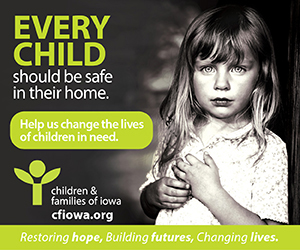Taxes too high? Let’s cut state costs

For decades, Iowa policymakers have grappled with the problem of rising property taxes and, for decades, Iowa lawmakers have made valiant efforts to create mechanisms to provide Iowans with property tax relief.
In the 1970s, lawmakers developed our landmark school foundation formula to achieve the dual goals of establishing spending equity among school districts of varied wealth and providing property tax relief for hard-pressed taxpayers.
Today that formula continues to provide an equitable base of per-student funding while also providing massive property tax relief; the ratio of property taxes to state aid has been reversed from 60/40 weighted on local property taxes to 40/60 with the greater burden now shouldered by state government.
A decade later, the Legislature responded to rising farmland values and created a structure to bind agricultural land and residential property together in a check-and-balance system to prevent one class of property from growing in value faster than the other. Today that system and its residential rollback mechanism provide residential property owners with a very real limitation on property tax growth.
Lacking the residential rollback mechanism, Iowa homeowners would see their property taxes grow to almost DOUBLE their current cost.
For more than 30 years, Iowa legislators from both parties have shown a real commitment to property tax relief and have been willing to spend hundreds of millions of state tax dollars to help relieve local property tax burdens.
And yet, the problem still exists.
Since 1995, property taxes in Iowa have grown more than 62 percent, at an annualized rate of 5.67 percent. In 1995, residential property taxpayers paid 49 percent of all property taxes. Today they continue to pay 49 percent of the burden. And as agricultural taxes have fallen from 24.5 percent of the burden in 1995 to 16.3 percent today, commercial property taxes have risen from 22.2 percent of the burden in 1995 to 30 percent today.
Thus, the current demand being placed on lawmakers is to address the rise in commercial property taxes. And, again, the answer that appears to be coming forward is the expenditure of additional state dollars to buy down the property tax burden.
We are never going to solve the property tax problem by asking taxpayers to pay more and simply shift the costs of local government to state sales or income taxes. No, the only way to truly curb property tax growth is to control the growth of those government expenditures that drive property taxes up in the first place.
This won’t be easy, and it won’t be without significant political risk.With more than 900 cities, nearly 400 school districts, 99 counties and countless townships, we have an incredibly expensive local government infrastructure.
We’ve tried numerous formulas and spent billions of dollars dealing with the symptoms of property tax growth. Now we must focus our efforts on the root cause of property tax growth and design solutions that reduce the pressure for more and more of your property tax dollars.
Jeffrey Boeyink is president of Iowans for Tax Relief.







